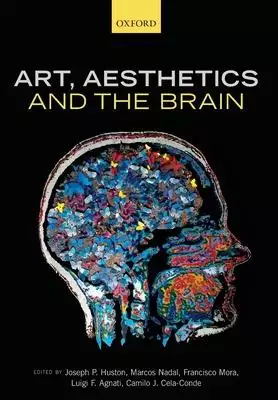Modulate meaning的問題,透過圖書和論文來找解法和答案更準確安心。 我們找到下列包括價格和評價等資訊懶人包
Modulate meaning的問題,我們搜遍了碩博士論文和台灣出版的書籍,推薦Huston, Joseph P. (EDT)/ Nadal, Marcos (EDT)/ Mora, Francisco (E寫的 Art, Aesthetics, and the Brain 可以從中找到所需的評價。
國立臺灣科技大學 材料科學與工程系 柯文政所指導 鍾官諭的 製備具多層石墨烯電極之氮化鎵高電子遷移率電晶體及其特性研究 (2021),提出Modulate meaning關鍵因素是什麼,來自於石墨烯、高電子遷移率電晶體。
而第二篇論文臺北醫學大學 生醫材料暨組織工程研究所博士班 LU, LONG-SHENG、YANG, TZU-SEN所指導 MOMOH GBETUWA的 Nucleus Near-Infrared (nNIR) Irradiation of Single A549 Cells Induces DNA Damage and Activates EGFR Leading to Mitochondrial Fission (2021),提出因為有 Mitochondrial、A549 Cell、Fusion、Fission、PD153035、Cetuximab、Caffiene的重點而找出了 Modulate meaning的解答。
Art, Aesthetics, and the Brain

為了解決Modulate meaning 的問題,作者Huston, Joseph P. (EDT)/ Nadal, Marcos (EDT)/ Mora, Francisco (E 這樣論述:
Humans have engaged in artistic and aesthetic activities since the appearance of our species. Our ancestors have decorated their bodies, tools, and utensils for over 100,000 years. The expression of meaning using color, line, sound, rhythm, or movement, among other means, constitutes a fundamenta
l aspect of our species' biological and cultural heritage. Art and aesthetics, therefore, contribute to our species identity and distinguish it from its living and extinct relatives. Science is faced with the challenge of explaining the natural foundations of such a unique trait, and the way cultura
l processes nurture it into magnificent expressions, historically and ethnically unique. How does the human brain bring about these sorts of behaviors? What neural processes underlie the appreciation of painting, music, and dance? How does training modulate these processes? How are they impaired by
brain lesions and neurodegenerative diseases? How did such neural underpinnings evolve? Are humans the only species capable of aesthetic appreciation, or are other species endowed with the rudiments of this capacity? This volume brings together the work on such questions by leading experts in geneti
cs, psychology, neuroimaging, neuropsychology, art history, and philosophy. It sets the stage for a cognitive neuroscience of art and aesthetics, understood in the broadest possible terms. With sections on visual art, dance, music, neuropsychology, and evolution, the breadth of this volume's scope r
eflects the richness and variety of topics and methods currently used today by scientists to understand the way our brain endows us with the faculty to produce and appreciate art and aesthetics.
製備具多層石墨烯電極之氮化鎵高電子遷移率電晶體及其特性研究
為了解決Modulate meaning 的問題,作者鍾官諭 這樣論述:
近年來,第三代寬能隙半導體材料氮化鎵被廣泛應用於高頻及高功率元件,然而高功率操作下元件廢熱堆積,會使元件特性衰退,傳統金屬電極也有熱退化問題。本研究在氮化鎵高電子遷移率電晶體(GaN HEMT)基板上使用金屬摻雜調變石墨烯功函數,使其能在GaN上形成歐姆與蕭特基接觸,製備石墨烯電極,其高熱傳導特性能輔助散熱,提高元件熱穩定性。藉由使用氮摻雜超奈米晶鑽石薄膜(N-UNCD)作為固態碳源,配合鎳金屬催化層之熱處理轉換技術製備石墨烯薄膜。研究初期通過調整N-UNCD成長的預熱溫度、加入偏壓以及調整氮氣流量提高成核密度並降低石墨烯的電阻率,成功在氮化鎵基板上成長出均勻度高,電阻率的10 Ω-cm的連
續石墨烯薄膜。通過金屬摻雜方式在GaN HEMTs基板上製作石墨烯歐姆與蕭特基接觸,經變溫I-V量測,石墨烯歐姆接觸呈現正溫度係數,為過渡金屬特性;石墨烯蕭特基接觸在配合類鑽碳膜作為鈍化層後具有0.95 eV的蕭特基能障與1.36的理想因子。在變溫I-V量測中與傳統金屬相反,蕭特基能障隨溫度上升而增加,理想因子隨溫度上升而下降,適合在高溫操作下使用。後續使用金屬摻雜石墨烯電極結構應用在氮化鎵高電子遷移率電晶體,石墨烯電極具有較傳統金屬電極更高的飽和電流,適合高功率應用。通過調變閘極偏壓能夠觀察到飽和電流變化,能調變空乏區寬度,具控制能力;然而元件無法隨閘極逆偏壓的增加而截止。在變溫Ids-Vd
s量測中,石墨烯電極在320 oC下較室溫時僅有39%衰退,而傳統金屬電極則有51%衰退。在350 oC環境進行熱穩定性量測中,傳統金屬電極在2小時後有明顯衰退現象,電阻值也有所上升,而石墨烯電極則維持穩定,顯示石墨烯電極具有較佳的熱穩定性,適合應用於高功率操作。
Nucleus Near-Infrared (nNIR) Irradiation of Single A549 Cells Induces DNA Damage and Activates EGFR Leading to Mitochondrial Fission
為了解決Modulate meaning 的問題,作者MOMOH GBETUWA 這樣論述:
Abstract Background: There has been great interest in identifying the biological substrate for light-cell interaction and their relations to cancer treatment. In our study, a single cell nuclear NIR (nNIR) and cytosol exposed NIR has been used to determine for the first-time mitochondria fragmentat
ion count (MFC) to compare NIR effect on subcellular cells. Near infra-red (NIR) possesses less light scattering and absorption in biological tissues it has a biological window that bears a very small photodamage and thus possesses a deep tissue penetration depth. Aim: To evaluate near-infrared (NIR
) laser focused into the nucleus (nNIR) or cytoplasm (cNIR) of a single living cell by a high numerical aperture condenser to dissect the novel role of cell nucleus in mediating NIR effects on mitochondrial dynamics of A549 non-small cell lung cancer cells.Materials and Methods: Cultured 150 single
cell of A549 nucleus and cytosol were incubated with 0.3 μM mitotracker green for 30 min washed with PBS, imaged control cell then treated with 224.02 J/cm2 NIR for 10 s and cells imaged at different time points of 1, 5, 10, 15 and 20 min. A549 cells were treated with conjugated 100 nM FND-EGF and i
ncubated with PD153035, caffeine and cetuximab for 1 h, and imaged cells. Results: Our analysis showed nNIR, but not cNIR, triggered mitochondrial fission in 10 minutes. On the contrast, the fission/fusion balance of mitochondria directly exposed to cNIR does not change. While the same phenomenon is
also triggered by single molecular interactions between epidermal growth factor (EGF) and its receptor EGFR, pharmacological studies with cetuximab, PD153035 and caffeine suggest EGF signaling crosstalk to DNA damaging response to mediate rapid mitochondrial fission as a result of nNIR irradiation.
These results suggest that nuclear DNA integrity is a novel biological target for cellular response to NIR. Conclusions: These results suggest that nuclear DNA integrity is a novel biological target for cellular response to NIR. Keywords: Keywords: near infrared (NIR), epidermal growth factor recep
tor (EGFR), mitochondrial fragmentation count (MFC), mitochondrial dynamic, cetuximab, caffeine.